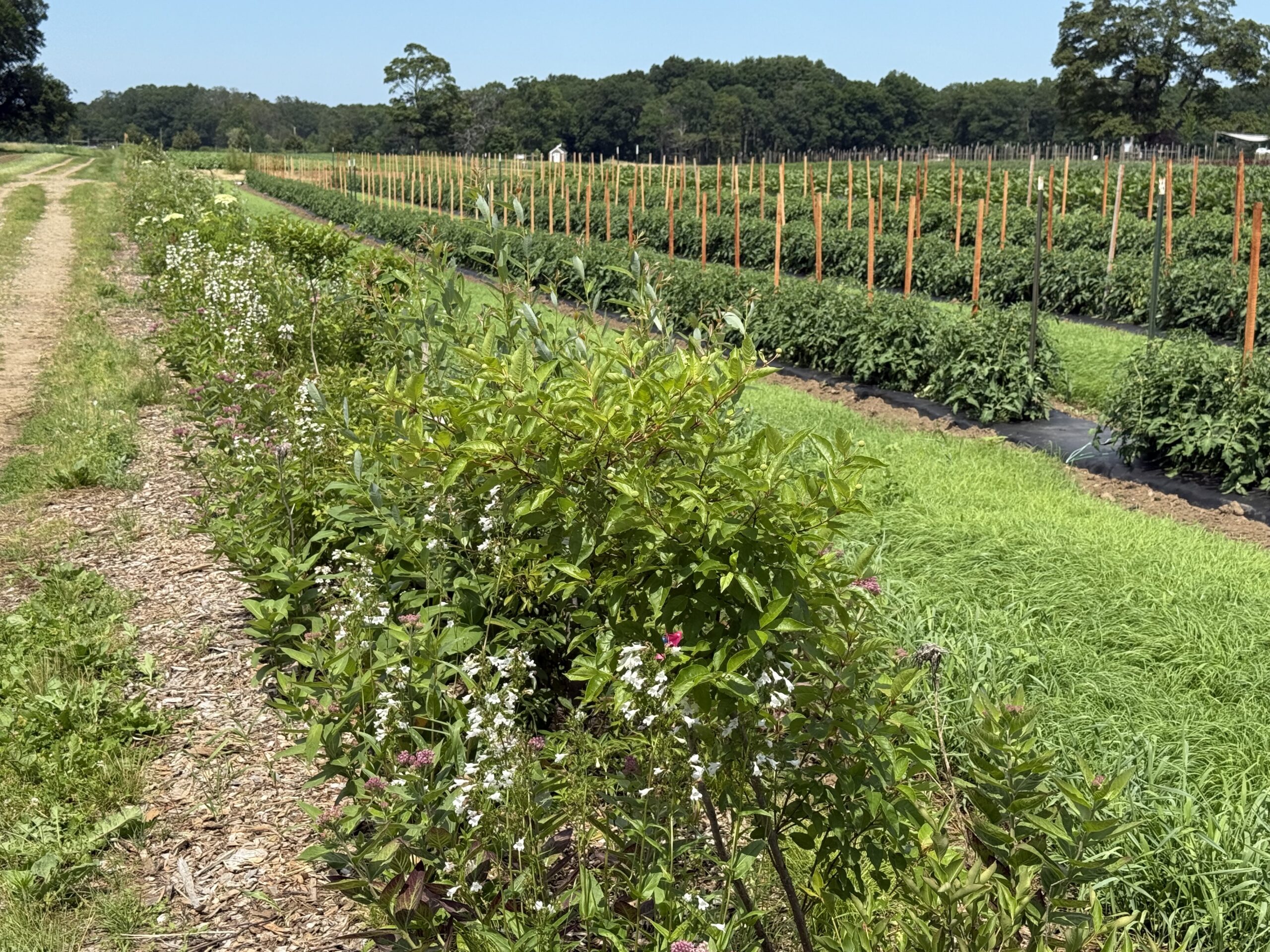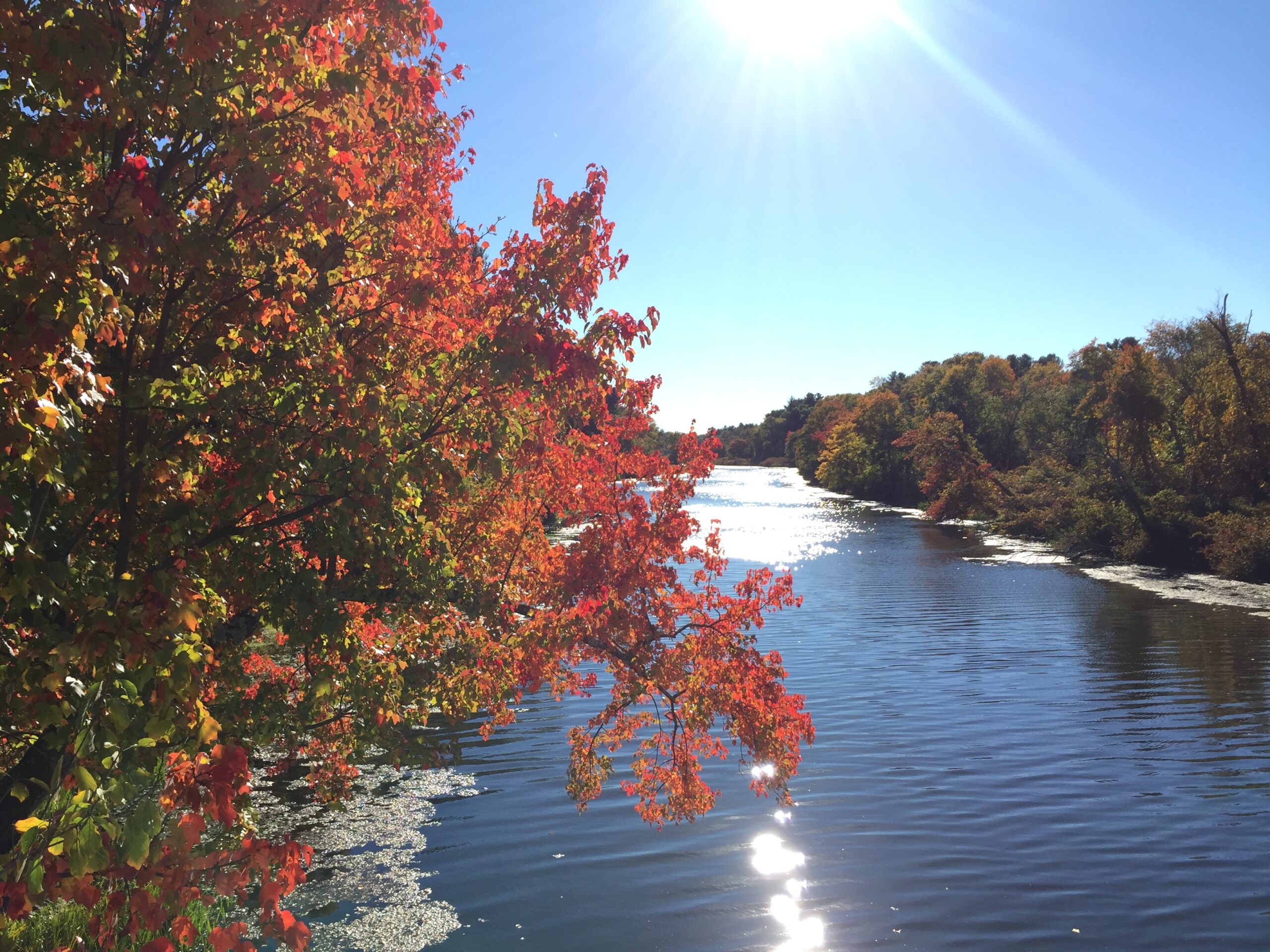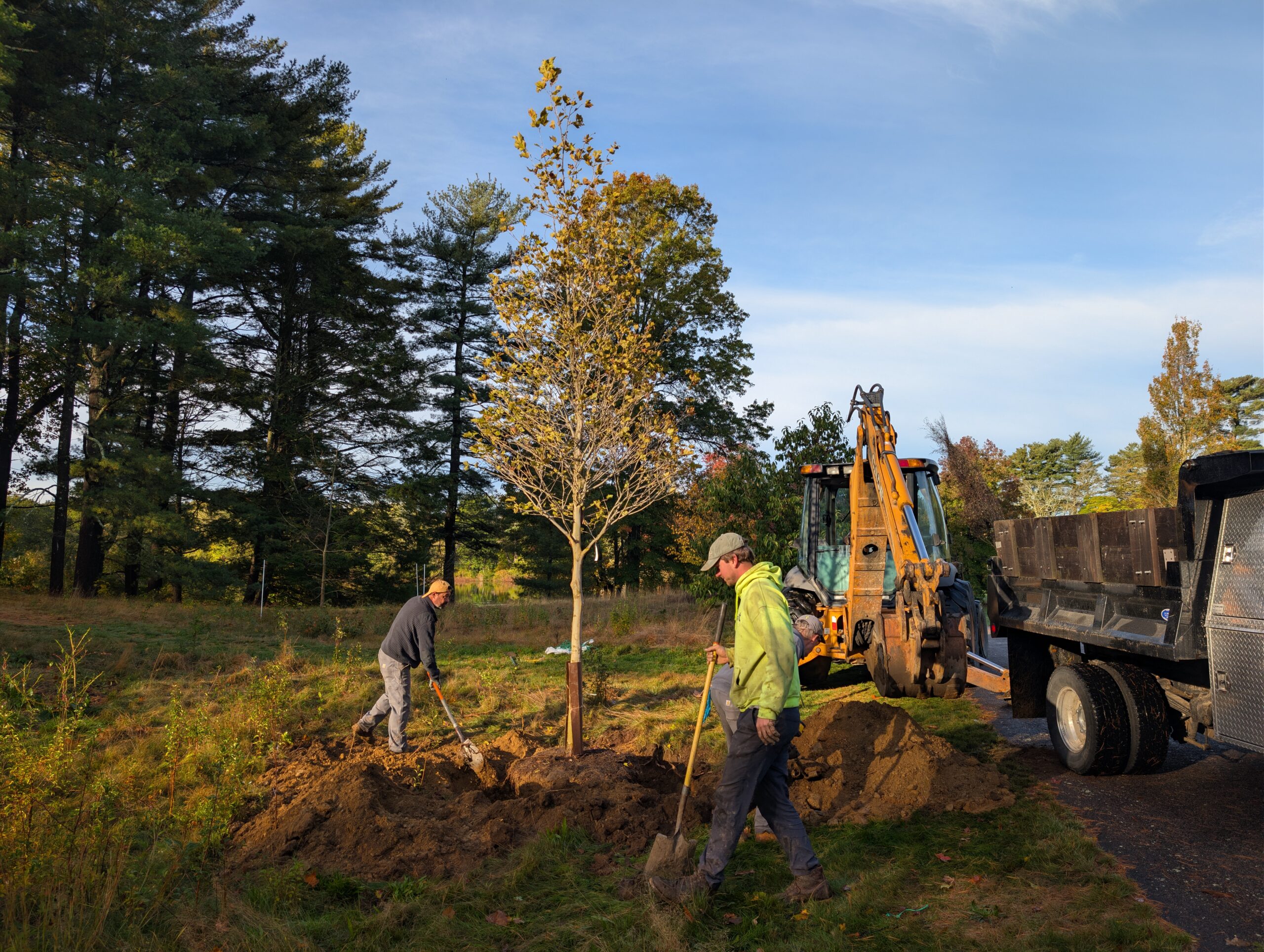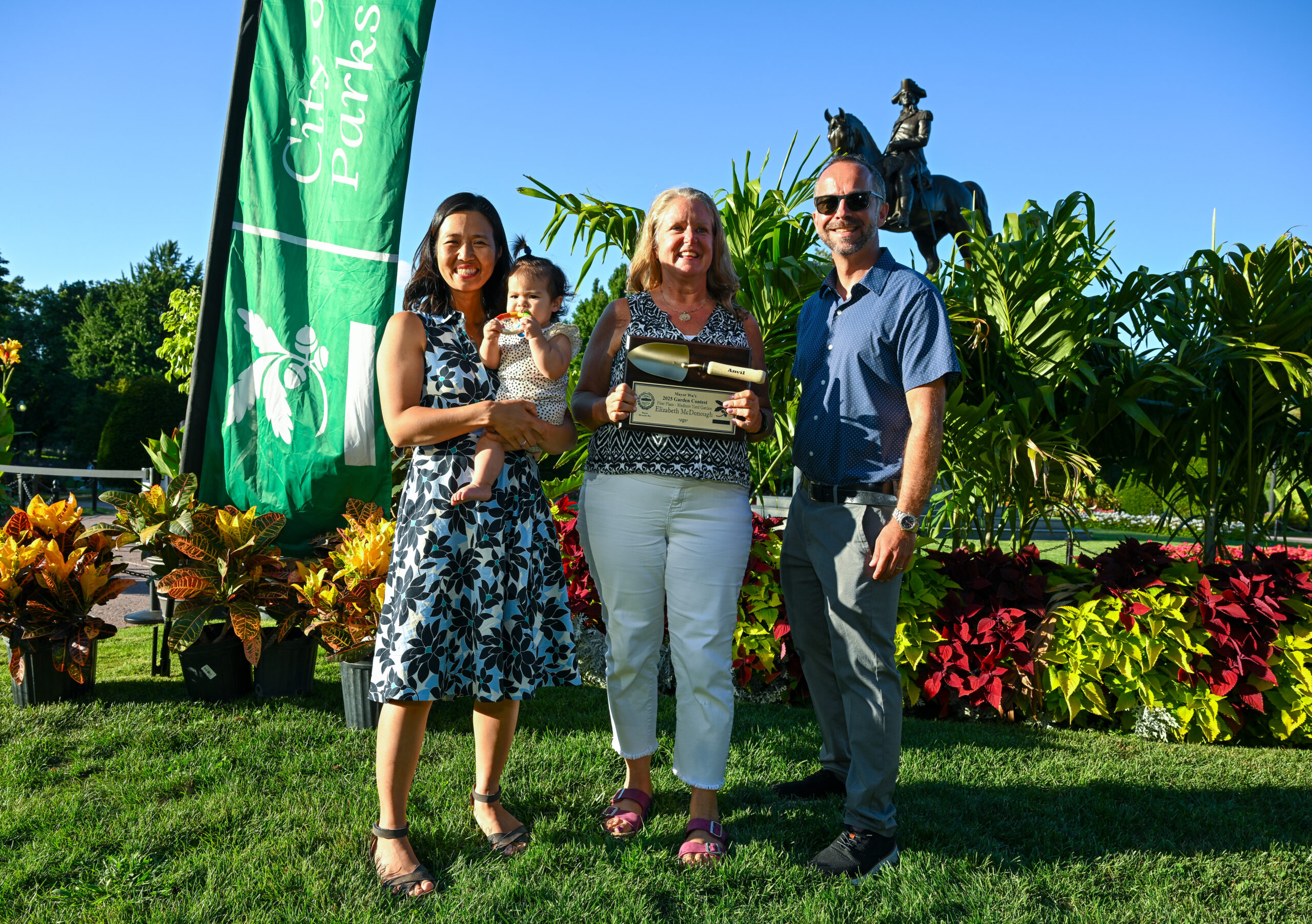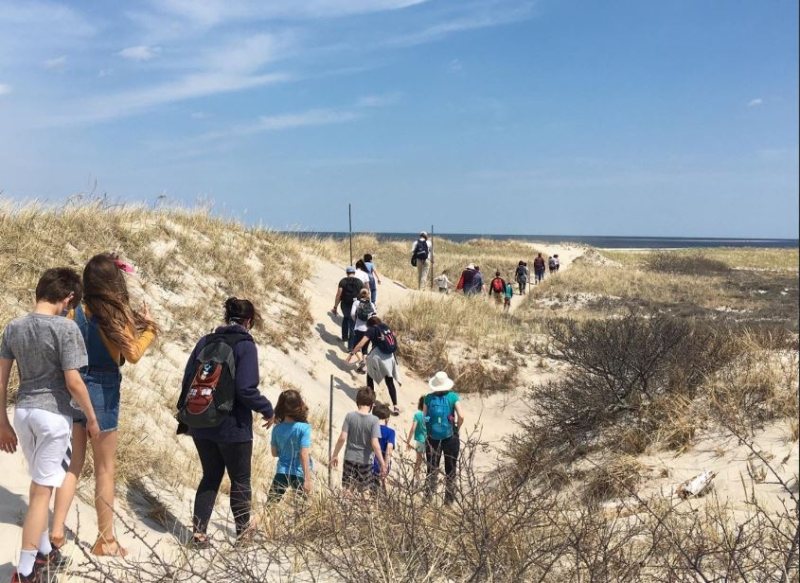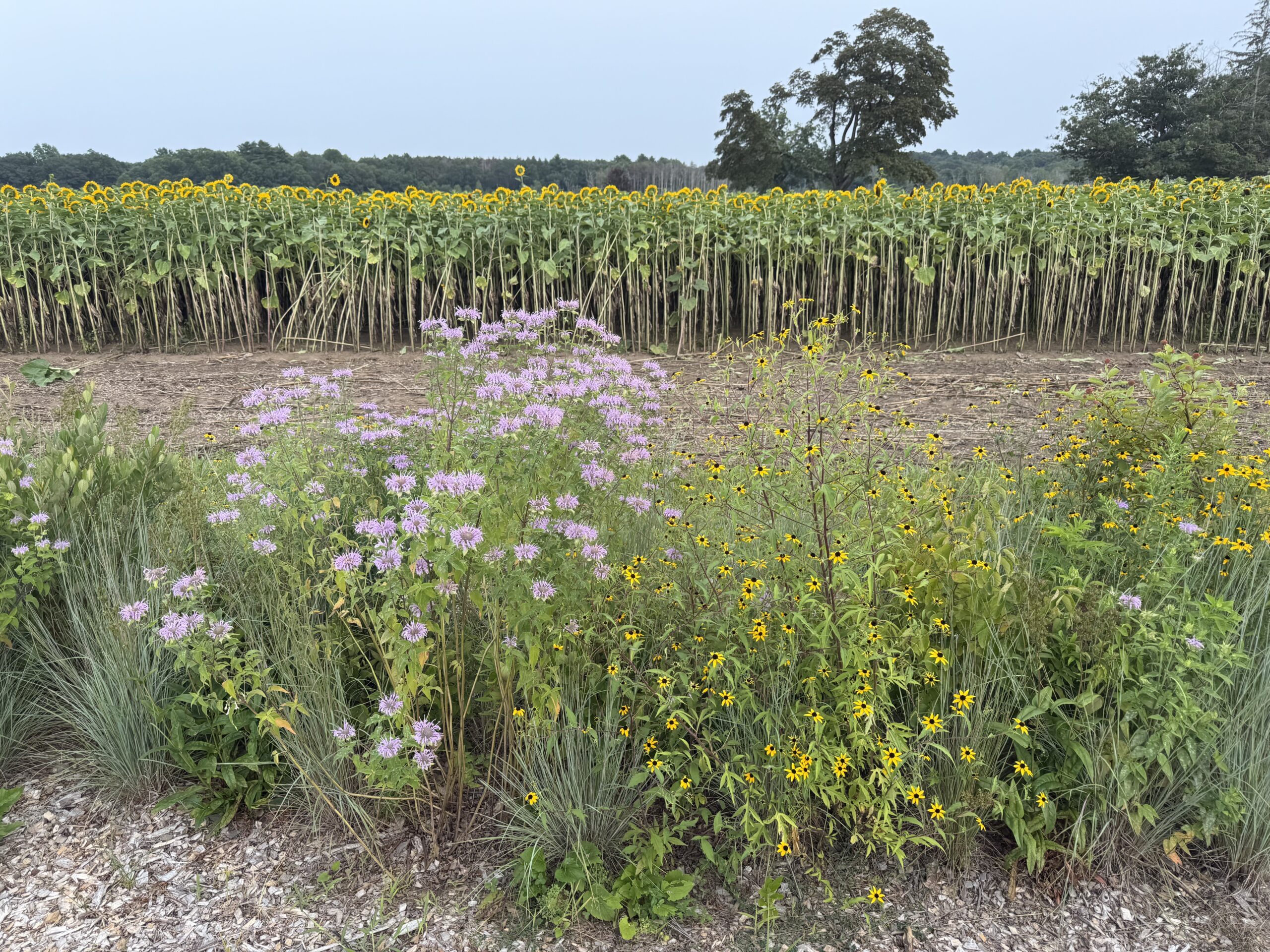
Hello again from your Agroecology team. We hope you have enjoyed the show our native hedgerows have been putting on for you this year. As we described last year while planting was in progress, the goals of this hedgerow are multiple. Of course it is beautiful, and we hope you enjoy the flowers as you pick your veggies. The pollinators including bumblebees, honeybees and several other types of native bees, flies, and beetles have been enjoying the continuous bloom across the seasons. The cardinal flowers that are blooming now have finally attracted our first hummingbirds.
Roughly, the planting is divided into two sections, wet and dry, which are clear to see at this time of year. In the dry section the monarda and rudbeckia are putting on a show right now. These two herbaceous plants are in fact dwarfing the woody shrubs planted at the core of the hedgerow. In the wet section we have the bright red lobelia and asclepias leading the show.
All the way back in April, the flowering season kicked off with native willows. While they don’t produce nectar, the flowers are loaded with pollen that is important protein for native ground-nesting bees that are starting to build their nests, potentially in those same hedgerows! Beach plums and aronias were not far behind in May, followed by two species of viburnums, elderberries, and the very popular penstemons in June. July was the peak for ceanothus, spiraea, and cephalanthus. The asclepias has been going strong for weeks now, one day we counted over 100 bumblebees visiting just this one species in 15 minutes. And now, our late summer species have joined the show.
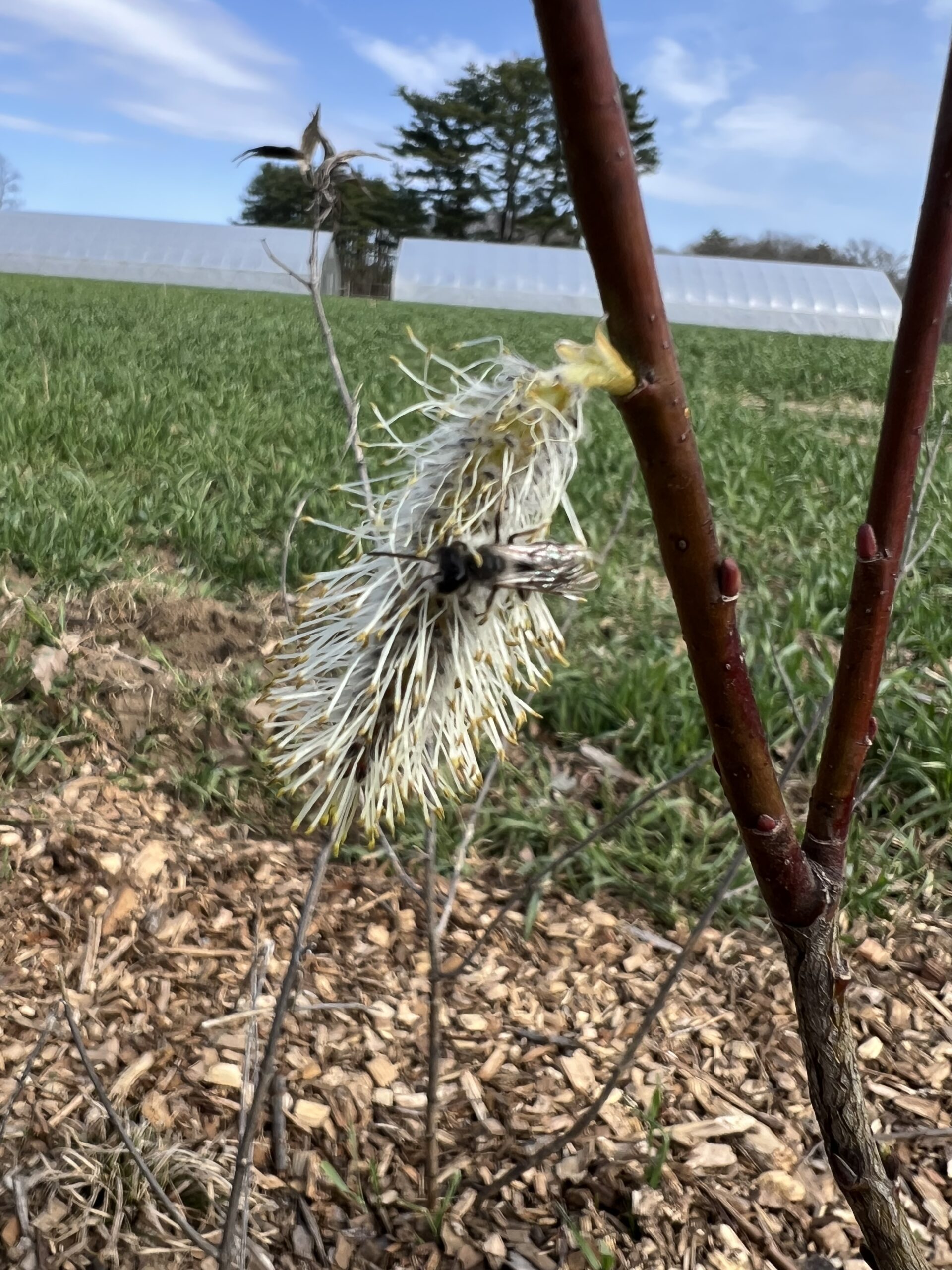
Believe it or not, this is still just the beginning, get set for more growth and diversity next year! If you want to learn more about our plants, ask Margit to show you the plant guide that our Terracorps member, Angie, put together this year.
In addition to providing beauty and habitat for insects and birds, we are hoping our hedgerows can provide shelter for the crops planted near them. This year we started using monitoring equipment to track the effectiveness of the hedgerows to reduce windspeed downwind, and in doing so keep more moisture in the soil. The tool we use to measure windspeed, an anemometer, has a series of cups that spin faster as they are blown by the wind. We mounted two of these on posts in the first and second bed of tomatoes downwind of the hedgerow. A third is located outside of the field on a post to serve as a reference. Any decrease in windspeed in the tomatoes is a sign our hedgerows are doing their job. Finally, we have buried soil moisture sensors in the ground below the crops. These will help us understand how much moisture is getting into the ground and how long it stays there after rainfall or irrigation, with the hope that reduced windspeed means reduced evaporation. Have a great season!. We will check back next year with an update.
